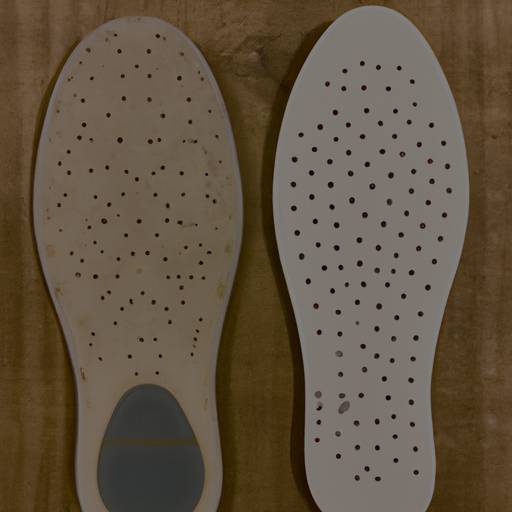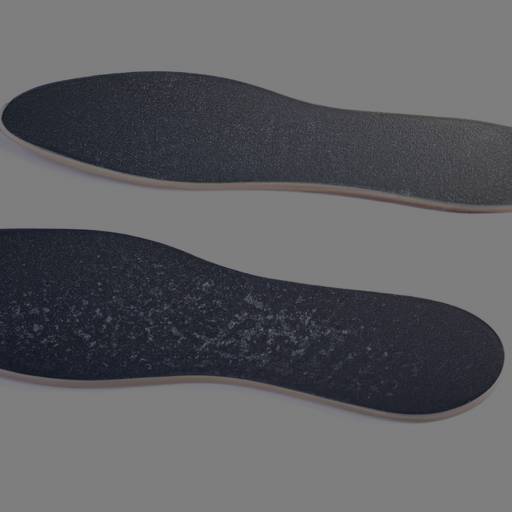How to Choose the Right Insole for Arch Support
Understanding the Importance of Arch Support
Proper arch support plays a vital role in maintaining good foot health. The arches of our feet act as shock absorbers, distributing the weight and pressure evenly as we walk, run, or stand. Arch support helps to maintain the alignment of the foot and provides stability, reducing the risk of various foot problems.
The Role of Arch Support in Foot Health
Arch support helps to alleviate stress and strain on the feet. It promotes proper foot mechanics, which in turn can help improve overall posture and alignment. By providing adequate support to the arches, it helps prevent excessive pronation (inward rolling) or supination (outward rolling) of the foot. This can reduce the risk of common foot conditions such as plantar fasciitis, shin splints, and Achilles tendonitis.
Furthermore, arch support helps to distribute the pressure evenly across the foot, reducing the chances of developing painful pressure points or calluses. It also helps to absorb shock and reduce the impact on the joints, which can be particularly beneficial for individuals who engage in high-impact activities like running or jumping.
Common Problems Caused by Lack of Arch Support
Insufficient or inadequate arch support can lead to a variety of foot problems. Without proper support, the arches can collapse or become strained, causing discomfort and pain. Some common issues associated with a lack of arch support include:
- Flat Feet: Flat feet occur when the arches of the feet touch the ground or have very minimal height. This can lead to overpronation and result in foot pain, fatigue, and instability.
- Plantar Fasciitis: Plantar fasciitis is a condition characterized by inflammation of the plantar fascia, a band of tissue that connects the heel bone to the toes. Insufficient arch support can contribute to the development of this painful condition.
- Metatarsalgia: Metatarsalgia refers to pain and inflammation in the ball of the foot. Inadequate arch support can increase pressure on the forefoot, leading to metatarsalgia.
- Heel Pain: Lack of arch support can contribute to heel pain, including conditions such as Achilles tendonitis and heel spurs.
- Shin Splints: Shin splints are characterized by pain along the shinbone (tibia). Insufficient arch support can contribute to the development of this common overuse injury.
By understanding the importance of arch support and the problems that can arise from a lack of it, you can make informed decisions when choosing the right insoles to support your feet. For more information on selecting the best insoles for arch support, refer to our article on how to pick insoles.
Different Types of Insoles
When it comes to choosing the right insole for arch support, there are several options available. Understanding the differences between these insoles can help you make an informed decision. Let’s explore three popular types of insoles: memory foam insoles, gel insoles, and orthotic insoles.
Memory Foam Insoles
Memory foam insoles are known for their exceptional cushioning and ability to conform to the shape of your feet. These insoles are made from a viscoelastic material that responds to body heat, providing customized support and pressure relief. The memory foam molds to the contours of your arches, promoting proper alignment and reducing discomfort.
One of the key benefits of memory foam insoles is their soft and plush feel. They absorb impact, making them suitable for individuals with sensitive feet or those who spend long periods on their feet. However, it’s important to note that memory foam insoles may not offer as much arch support as other types of insoles. They are best suited for individuals with mild to moderate arch issues or those seeking extra cushioning. For a comprehensive selection of memory foam insoles, check out our article on memory foam insoles.
Gel Insoles
Gel insoles are another popular choice for individuals seeking arch support. These insoles are made from a gel-like material that provides excellent shock absorption and cushioning. Gel insoles help distribute pressure evenly across the foot, alleviating discomfort and reducing the strain on your arches.
One of the advantages of gel insoles is their durability. They are designed to withstand regular use without losing their supportive properties. Gel insoles are also known for their cooling effect, making them ideal for individuals who experience foot fatigue or discomfort from prolonged standing or walking. However, it’s important to note that gel insoles may not provide as much stability as other types of insoles, especially for individuals with severe arch issues. For more information on gel insoles, check out our article on gel insoles.
Orthotic Insoles
Orthotic insoles, also known as arch support insoles, are specifically designed to provide targeted support to your arches. These insoles are typically made from rigid or semi-rigid materials such as plastic or carbon fiber. Orthotic insoles help correct foot alignment, redistribute pressure, and provide stability to the arches.
One of the key advantages of orthotic insoles is their ability to address various foot conditions, including flat feet, high arches, and overpronation. They are recommended for individuals with moderate to severe arch issues or those seeking maximum support. Orthotic insoles can help alleviate foot pain, improve posture, and prevent further foot problems. However, it’s important to note that orthotic insoles may require an adjustment period, and some individuals may find them initially uncomfortable. For more information on orthotic insoles, visit our article on orthotic insoles.
By understanding the different types of insoles available, you can choose the one that best suits your specific arch support needs. Consider factors such as the level of cushioning, support, and any additional features that may be beneficial for your feet. Remember, it’s always a good idea to consult with a healthcare professional or podiatrist if you have severe foot issues or require custom-made orthotic insoles.
Assessing Your Arch Type
Before choosing the right insole for arch support, it’s essential to assess your arch type. Understanding your arch type will help you select an insole that provides the appropriate level of support and comfort. There are three main arch types: high arches, flat feet, and neutral arches.
Identifying High Arches
High arches, also known as pes cavus, are characterized by a prominent arch that doesn’t fully flatten when standing. People with high arches often have a narrower footprint and less surface area in contact with the ground. This can lead to excessive pressure on the heel and ball of the foot.
To determine if you have high arches, you can perform a simple wet foot test. Wet the bottom of your foot and stand on a flat surface. If you see a narrow, curved footprint with a thin band connecting the heel and ball of the foot, you likely have high arches.
Individuals with high arches may benefit from insoles that provide cushioning and shock absorption. Look for insoles with extra padding in the heel and forefoot areas to help distribute pressure more evenly. For more information on the best insoles for high arches, check out our article on best high arch support insoles.
Identifying Flat Feet
Flat feet, also known as fallen arches or pes planus, occur when the arches of the feet collapse or do not develop fully. This results in a flatter footprint with more of the foot’s surface area in contact with the ground. Flat feet can lead to overpronation, where the foot rolls inward excessively during walking or running.
To identify flat feet, you can perform the wet foot test mentioned earlier. If your footprint appears wide and completely filled in, with little to no curve on the inner side, you likely have flat feet.
For individuals with flat feet, insoles with firm arch support are beneficial. These insoles help to stabilize the foot, promote proper alignment, and reduce overpronation. Look for insoles specifically designed for flat feet or consult with a podiatrist for customized options. Our article on flat foot custom insoles provides more information on this topic.
Identifying Neutral Arches
Neutral arches, also known as normal arches, are considered the ideal arch type. The arch is well-defined but not overly pronounced. People with neutral arches typically have a balanced distribution of weight and pressure across the foot.
To identify neutral arches, the wet foot test can also be used. If your footprint shows a distinct curve on the inner side, with the ball of the foot and heel connected by a moderate band, you likely have neutral arches.
For individuals with neutral arches, a variety of insoles can provide comfort and support. Look for insoles that offer cushioning and shock absorption, as well as a moderate level of arch support. These insoles can help maintain the natural alignment of the foot and provide additional comfort during daily activities.
Understanding your arch type is an essential step in choosing the right insole for arch support. By selecting insoles that are specifically designed for your arch type, you can improve foot comfort and promote proper alignment. Remember to consult with a healthcare professional or podiatrist if you have any concerns or require personalized recommendations.
Choosing the Right Insole for Arch Support
When it comes to selecting the right insole for arch support, it’s important to consider the specific needs of your feet. Different arch types require different levels of support and cushioning. In this section, we will discuss the considerations for high arches, flat feet, and neutral arches.
Considerations for High Arches
If you have high arches, you’ll want to look for insoles that provide extra cushioning and arch support. The high arches tend to put more pressure on the balls and heels of the feet, which can lead to discomfort and pain. Insoles with a deep heel cup and arch contour can help distribute your weight more evenly and provide stability. Look for insoles that offer rigid arch support or semi-rigid arch support, as they can effectively support high arches. For more information on the best insoles for high arches, check out our article on best high arch support insoles.
Considerations for Flat Feet
Flat feet require insoles that offer strong arch support and stability. Flat arches can cause the feet to roll inward, leading to overpronation and potential foot pain. Look for insoles with a firm arch support or custom orthotic options that can help correct the alignment of your feet. These insoles provide the necessary support to maintain proper foot posture and reduce strain on the feet. To learn more about insoles for flat feet, take a look at our article on flat foot custom insoles.
Considerations for Neutral Arches
For those with neutral arches, the main focus should be on comfort and cushioning. Neutral arches have a balanced foot structure, but it’s still important to provide adequate support to prevent potential pain or discomfort. Look for insoles with moderate arch support and good shock absorption. These insoles will provide the necessary cushioning and support to keep your feet comfortable throughout the day.
By considering your specific arch type, you can find the insoles that provide the ideal level of support and comfort. Remember, it’s always a good idea to try different insoles and see which ones work best for you. If you have any concerns or specific foot conditions, it’s recommended to consult with a podiatrist or healthcare professional for personalized guidance.
Tips for Finding the Perfect Fit
When it comes to choosing the right insole for arch support, it’s essential to find the perfect fit for your feet. Here are some useful tips to help you in your search:
Trying Different Insoles
Not all insoles are created equal, and what works for one person may not work for another. It’s important to try different types of insoles to find the one that suits your needs. Experiment with memory foam insoles, gel insoles, and orthotic insoles to see which provides the best support and comfort for your arches. Remember to give each insole a fair trial period before making a decision.
Understanding the Break-In Period
Insoles, especially those made from rigid materials, may require a break-in period. During this time, your feet will adjust to the new support and cushioning. It’s normal to experience some initial discomfort or pressure on your arches. However, if the pain persists or becomes unbearable, it’s important to reassess the fit and consult a professional if necessary. Our article on wearing orthotics side effects can provide further insights.
Seeking Professional Guidance
If you’re uncertain about which insole to choose or have specific foot conditions, seeking professional guidance from a podiatrist or orthopedic specialist is highly recommended. These experts can assess your arches, gait, and foot structure to provide personalized recommendations. They can also guide you on selecting the right insole material, thickness, and support level based on your needs. For a list of recommended shoe brands, you can refer to our article on what shoe brands do podiatrists recommend.
Remember, finding the perfect fit for your insoles is essential for optimal arch support and foot comfort. Don’t hesitate to explore different options, take your time during the break-in period, and consult professionals when needed. By prioritizing your foot health and comfort, you can find the insoles that work best for you.



